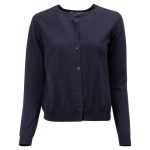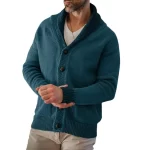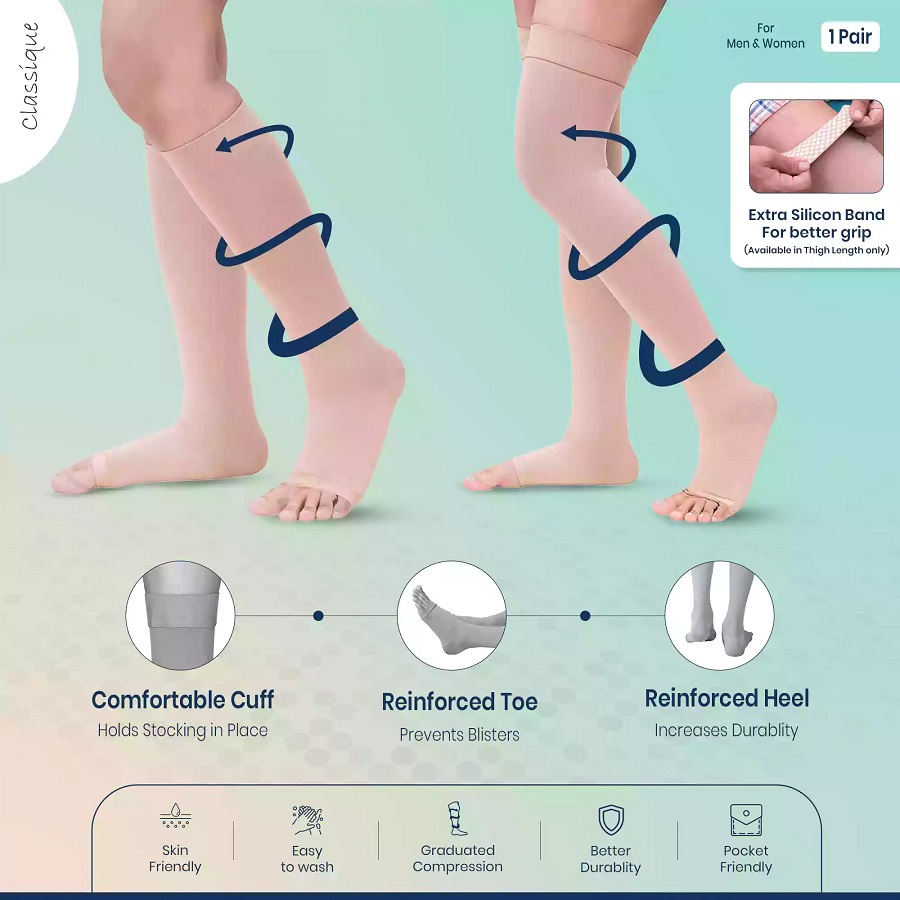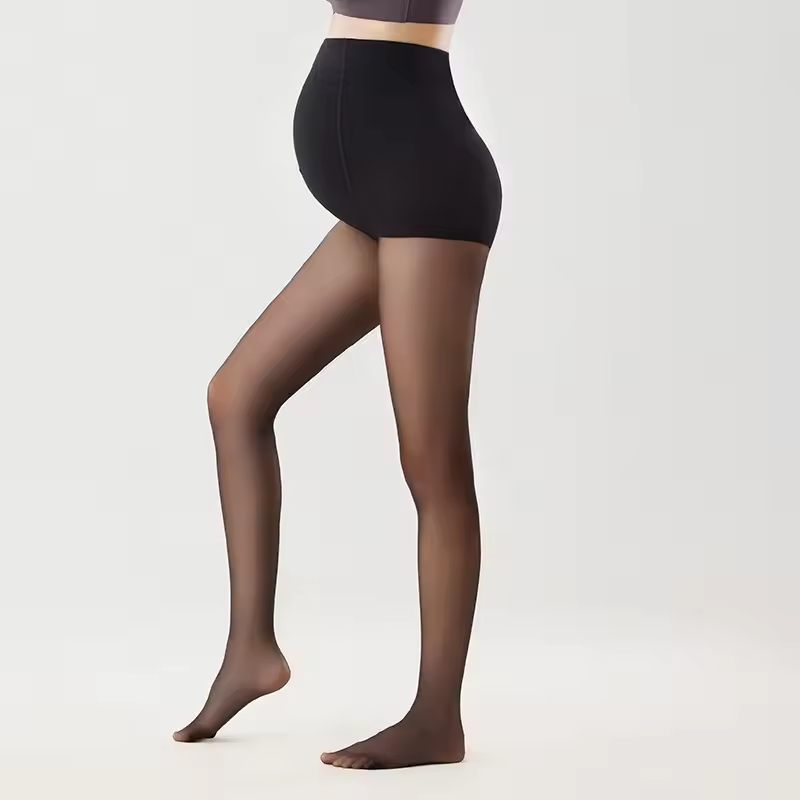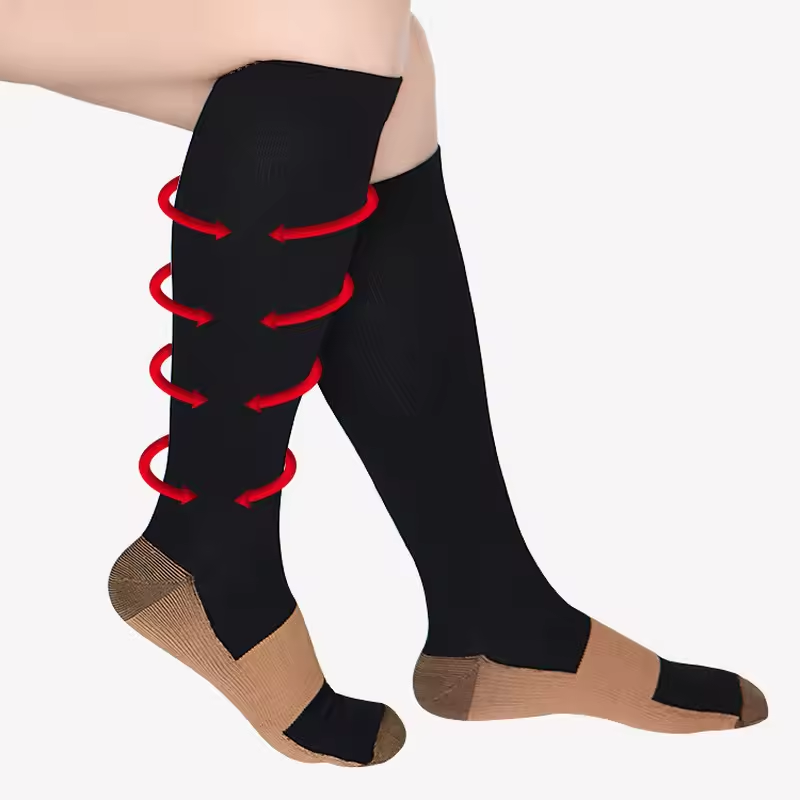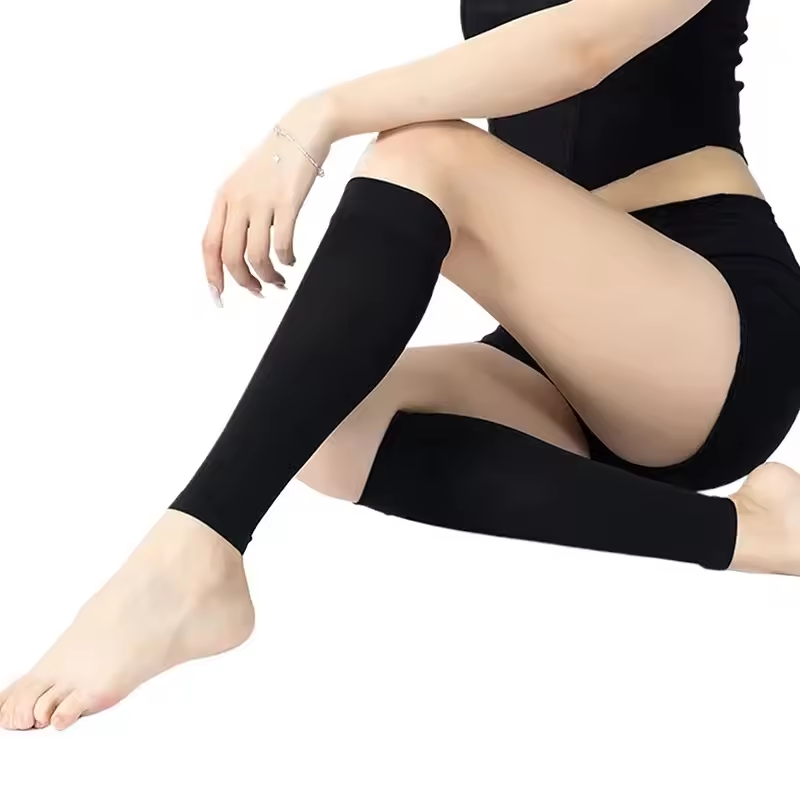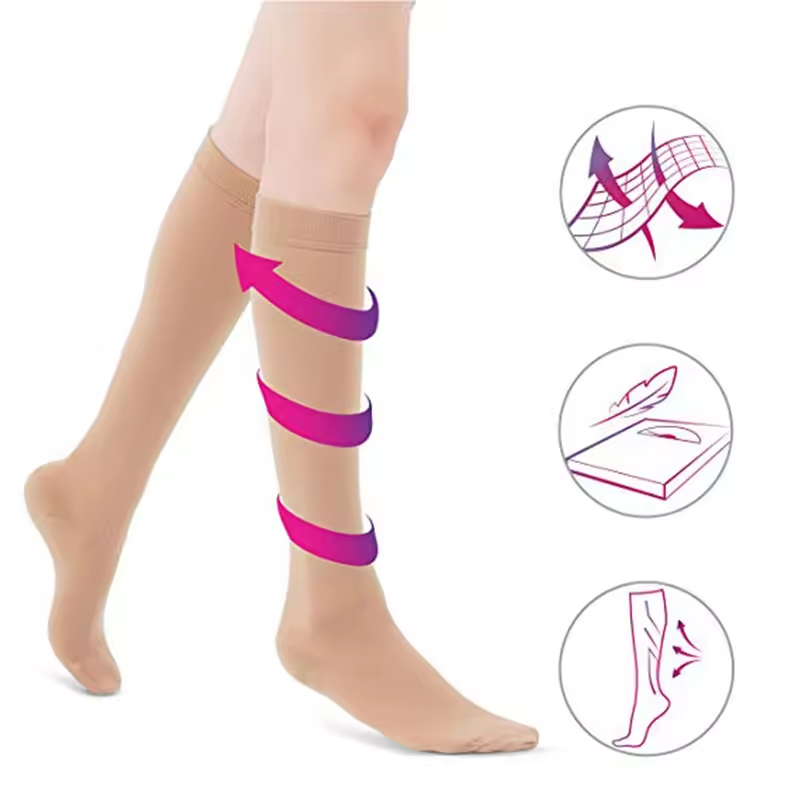Compression stockings are a valuable tool in improving blood circulation, reducing swelling, and providing relief from various leg-related conditions. To reap the full benefits, it’s crucial to ensure that the stockings fit properly. Improperly fitted compression stockings can lead to discomfort, reduced effectiveness, or even potential health risks. In this detailed guide, we will take you through the necessary steps to measure for compression stockings, ensuring you get the perfect fit every time.
Understanding Compression Stockings and Their Importance
What Are Compression Stockings?
Compression stockings are specially designed garments that apply consistent pressure to the legs, helping to improve blood flow and reduce swelling. They are often prescribed for conditions such as varicose veins, deep vein thrombosis (DVT), chronic venous insufficiency, and for individuals who spend long hours standing or sitting.
The stockings are made from elastic materials that exert varying levels of compression. These levels are typically measured in millimeters of mercury (mmHg), and depending on your specific condition, your doctor may recommend a particular compression level ranging from mild (8-15 mmHg) to medical-grade compression (30-40 mmHg).
Why the Right Fit Matters
The fit of your compression stockings plays a crucial role in their effectiveness. If they are too tight, they may cause discomfort, restrict blood flow, or create skin irritation. On the other hand, if they are too loose, they won’t provide adequate compression, rendering them ineffective. By taking the time to measure correctly, you can avoid these problems and ensure your stockings provide the maximum benefit.
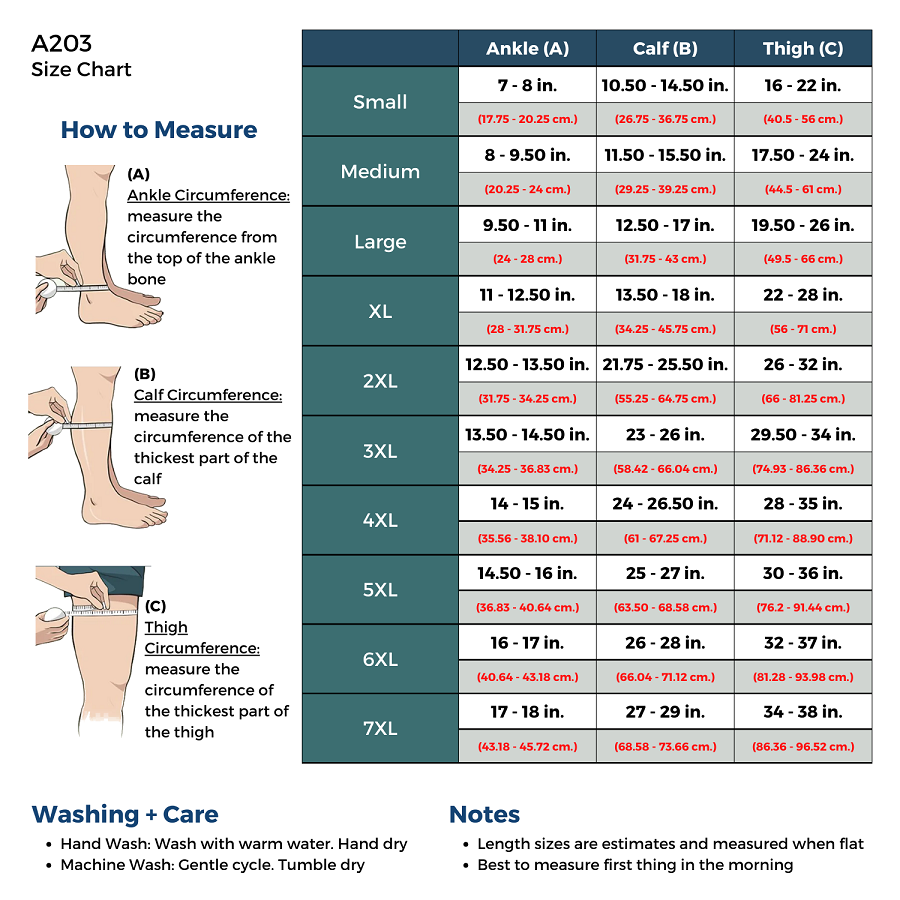
Step 1: Gather the Necessary Tools for Measuring
What You’ll Need
Before you begin measuring for compression stockings, it’s important to gather the tools you’ll need. You don’t need anything too specialized, but precision is key. Here’s what you’ll need:
- Soft, flexible tape measure: A standard cloth or plastic tape measure will work best for this task. Avoid using rigid measuring tapes or rulers, as they won’t conform to the curves of your leg.
- Pen and paper: Keep track of your measurements so you can reference them when choosing the right stockings.
- Helper (Optional): While it’s possible to measure on your own, having someone assist you can make the process easier, especially when measuring certain areas like your calf or thigh.
Ensure Accurate Measurements
To get accurate measurements, it’s essential to follow the instructions carefully. Take your measurements while standing, as this ensures your veins are fully expanded and provides the most accurate representation of the measurements you need for compression stockings.
Step 2: Measure Your Ankle Circumference
Why Ankle Measurements Are Important
The ankle is typically the area where compression stockings exert the most pressure, so getting an accurate measurement here is crucial. Compression stockings are designed to apply the highest level of compression at the ankle, gradually tapering off as they move up the leg.
How to Measure Your Ankle
- Stand naturally: Make sure you’re standing with your weight evenly distributed between both feet. This helps keep your leg in a natural position.
- Locate the narrowest part of your ankle: This is usually just above the bony protrusion at the outer side of your ankle.
- Wrap the tape measure around: Measure the circumference of your ankle at this point, making sure the tape is snug but not tight. Note down the measurement in inches or centimeters.
A well-fitted ankle measurement ensures that the stocking will provide adequate compression at the point where it’s most needed.
Step 3: Measure Your Calf Circumference
Why Calf Measurements Are Crucial
The calf measurement helps ensure that the compression stockings fit comfortably around your lower leg. Compression stockings are usually designed with a graduated compression pattern, meaning the pressure decreases as you move upwards. The calf is the next important area where the compression will help improve circulation.
How to Measure Your Calf
- Stand tall: Stand with your feet slightly apart, ensuring your legs are relaxed and not tensed.
- Find the widest part of your calf: This is typically the fullest part of your calf, usually around the mid-calf area.
- Wrap the tape measure around: Ensure the tape is parallel to the ground and snug, but not tight. Write down the circumference measurement.
If the stocking is too loose around your calf, it will not provide effective compression, while if it’s too tight, it could cause discomfort and restrict blood flow.
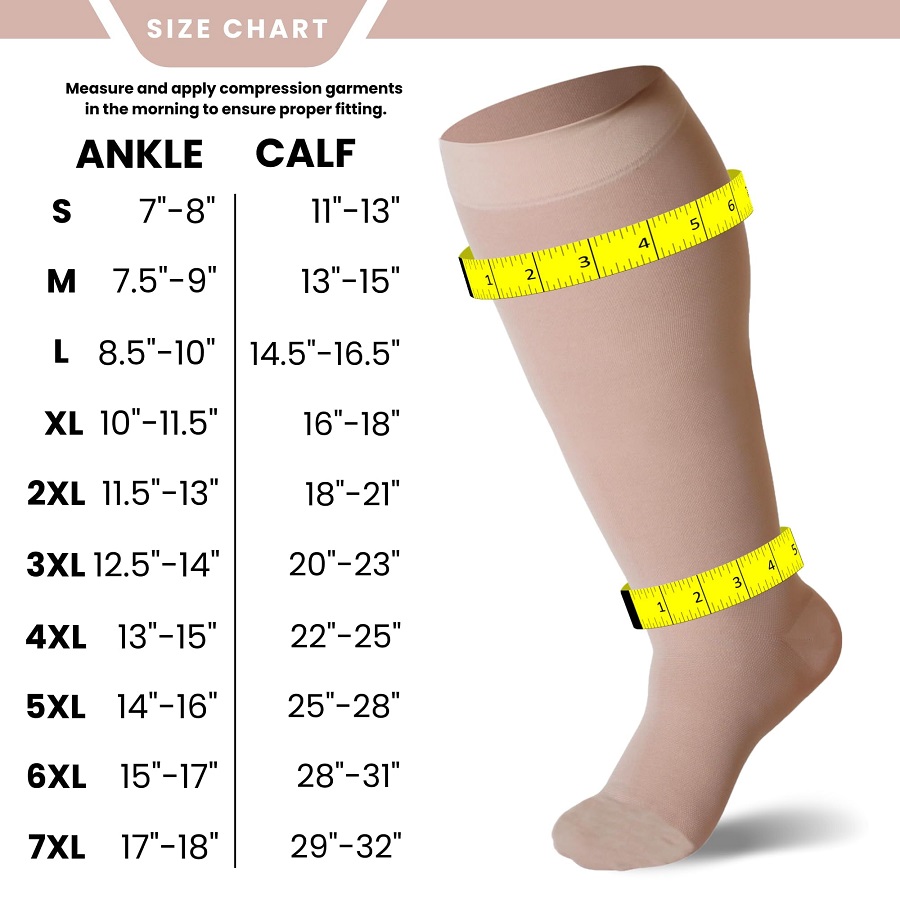
Step 4: Measure Your Thigh Circumference (for Thigh-High Compression Stockings)
Why Thigh Measurements Are Important
For thigh-high compression stockings, it’s important to measure around the widest part of your thigh to ensure that the stocking stays in place and fits snugly without rolling down or being too tight. Accurate thigh measurements are especially important for people with larger thighs or those who are prone to stocking slippage.
How to Measure Your Thigh
- Stand up straight: Keep your posture relaxed but upright, standing with your feet shoulder-width apart.
- Locate the widest part of your thigh: This is usually around the top third of your thigh.
- Wrap the tape measure around: Make sure the tape measure is snug but not tight, and keep it parallel to the floor.
Take note of this measurement to ensure that your thigh-high stockings fit comfortably and do not slip or bunch up.
Step 5: Measure Your Leg Length (for Thigh-High and Pantyhose-Style Stockings)
Why Leg Length Matters
The length of your leg determines how high the stocking will rise, and whether it’s thigh-high, knee-high, or pantyhose-style. Measuring correctly ensures that the stockings cover the correct amount of leg without being too long or short.
How to Measure Your Leg Length
- Stand straight: Stand with your feet shoulder-width apart and knees slightly bent.
- Measure from the floor to the desired height: For knee-high stockings, measure from the floor to just below the knee. For thigh-highs, measure from the floor to the top of your thigh. For pantyhose, measure from the floor to the waist.
It’s important to measure both legs if they are different lengths to ensure that the stockings will fit evenly and comfortably on both legs.
Step 6: Choose the Right Compression Level
Understanding Compression Levels
Compression stockings come in various levels of pressure, measured in mmHg. It’s important to choose the right level of compression based on your specific needs and the advice of your healthcare provider.
- Mild Compression (8-15 mmHg): Best for everyday use, light swelling, or tired legs.
- Moderate Compression (15-20 mmHg): Ideal for those with varicose veins, mild edema, or during long periods of sitting or standing.
- Firm Compression (20-30 mmHg): Recommended for people with more serious venous conditions like DVT, moderate edema, or after surgery.
- Medical-Grade Compression (30-40 mmHg): Prescribed for severe conditions like severe varicose veins or chronic venous insufficiency.
How to Choose the Right Compression
Your doctor or healthcare provider will typically recommend a compression level based on your medical condition. However, if you are purchasing stockings for general use or prevention, choosing a moderate compression level is usually sufficient.
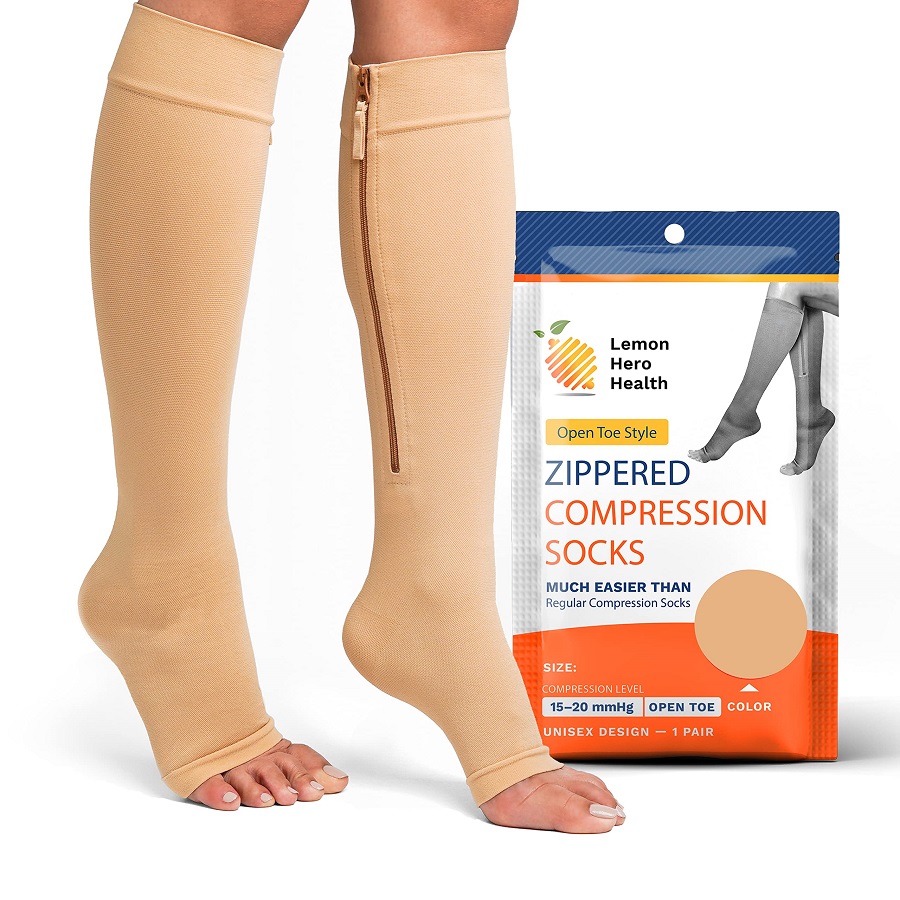
Step 7: Selecting the Right Type of Compression Stockings
Types of Compression Stockings
Compression stockings come in different styles and types, so it’s essential to choose the one that best fits your needs. Here are some common types:
- Knee-High Stockings: Ideal for people with mild swelling or those who experience leg fatigue but don’t have significant varicose veins.
- Thigh-High Stockings: Recommended for individuals with more severe leg conditions, as they provide more comprehensive coverage.
- Pantyhose-Style Compression Stockings: Provide full leg coverage and are a great option for those who need compression for both legs and the waist, such as during pregnancy or after surgery.
How to Choose the Right Type
Your healthcare provider can recommend the best style for you based on your condition. If you’re unsure, knee-high stockings are a good starting point, as they are versatile and provide targeted compression for the lower legs.
Conclusion: Getting the Perfect Fit for Maximum Comfort and Effectiveness
Measuring for compression stockings might seem like a daunting task, but by following these steps carefully, you can ensure you get the perfect fit every time. Whether you’re dealing with medical conditions like varicose veins or simply looking for relief from leg fatigue, the right compression stockings can make a significant difference in your comfort and overall health. Always remember to consult with your doctor if you’re uncertain about the appropriate compression level or style for your specific needs. Proper measurement, combined with the correct stocking choice, ensures that you can enjoy the benefits of compression therapy effectively and comfortably.



